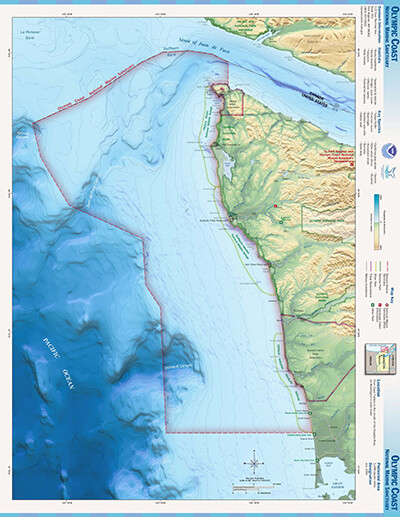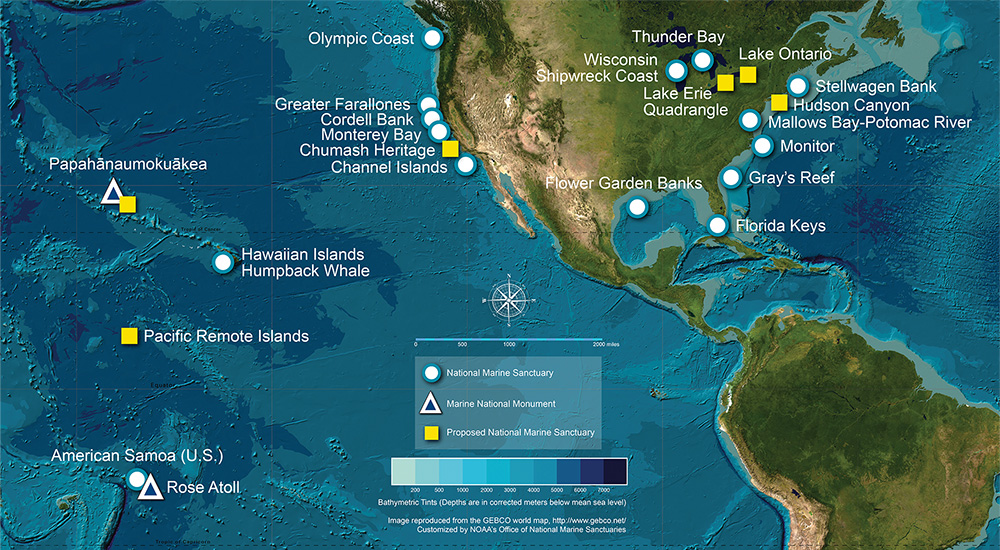
Olympic Coast National Marine Sanctuary is one of the nation's most treasured ocean areas, and home to a rich abundance of marine mammals, seabirds, fish, and thriving invertebrate communities.
The area occupies a maritime cultural landscape that has supported humans since time immemorial. The contemporary cultures of four coastal tribes - Hoh Tribe, Makah Tribe, Quileute Tribe, and Quinault Indian Nation - have forged inseparable ties to the ocean environment, maintaining traditions of the past while they navigate the challenges of the present.
Additionally, there are approximately two hundred historical shipwrecks reported in the vicinity of the sanctuary that mark the history of maritime shipping along the Olympic Coast.
Olympic Coast National Marine Sanctuary is undergoing a management plan review. The revised management plan will be informed by current issues and knowledge, and will help the sanctuary continue to protect natural and cultural resources. NOAA is inviting the public to help chart the future management and direction of this special place.
A "condition report" provides a summary of resources in Olympic Coast National Marine Sanctuary, pressures on those resources, current conditions and trends, and management responses to the pressures that threaten the integrity of the marine environment.
Looking for adventures this summer? Check out the Pacific Northwest jewel that is Olympic Coast National Marine Sanctuary!
Immerse yourself in the ocean and your national marine sanctuaries without getting wet!

Safeguarding America's Premier Marine Places
From Washington state to the Gulf of America and from the Great Lakes to the Pacific Islands, the National Marine Sanctuary System protects 18 underwater parks spanning over 629,000 square miles of ocean and Great Lakes waters. By investing in innovative solutions, we strengthen these iconic places to address 21st-century challenges while supporting America's commerce and tourism. These unique locations inspire people to visit, value, and steward our nation’s iconic ocean and Great Lakes waters.